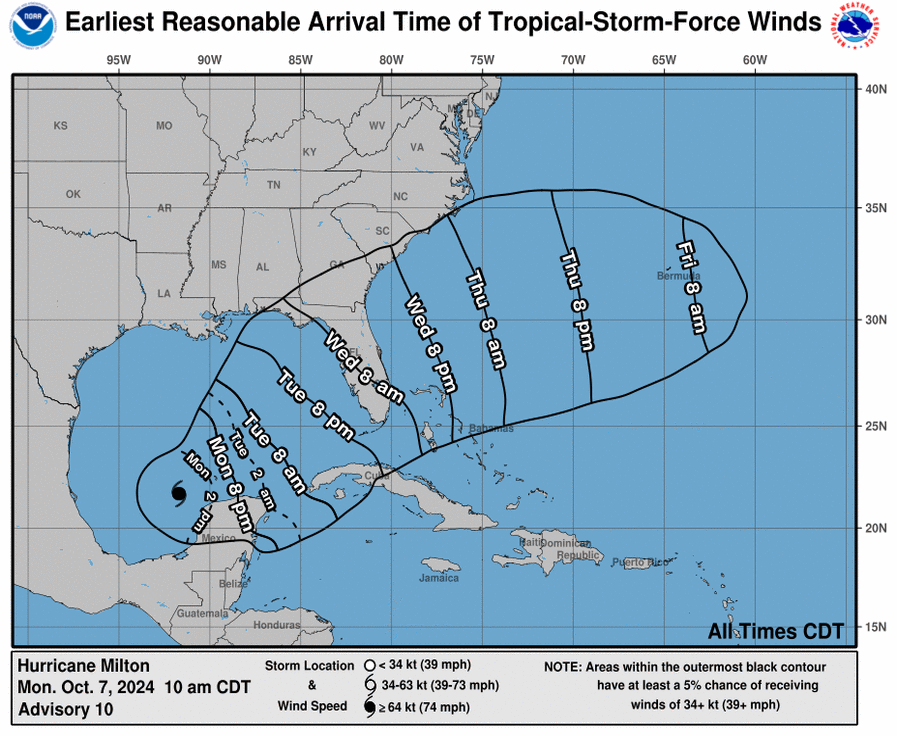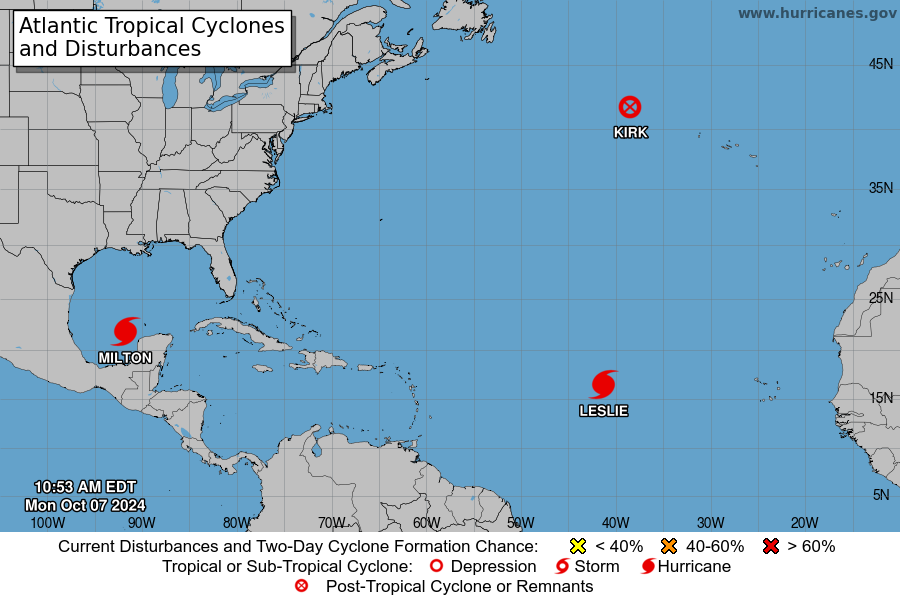FLORIDA—Hurricane Milton has intensified to a powerful Category 5, the National Hurricane Center reports, with maximum sustained winds of 160 mph moving east-southeast at 9 mph and a minimum central pressure is 925 millibars (27.32 inches) based on Air Force Reserve dropsonde data.

As of the 10 a.m. EST advisory, Hurricane Milton is expected to make landfall shortly before 8 a.m. on Wednesday, October 9, on Florida’s Gulf Coast between Tallahassee to the Keys. The eye of Hurricane Milton was located near latitude 21.7 North, longitude 91.7 West, just northwest of the Yucatan Peninsula.
Hurricane-force winds extend outward up to 30 miles from the center and tropical-storm-force winds extend outward up to 80 miles. Satellite images show a small eye within the very cold central cloud cover and becoming better defined.
Within the last 24 hours, Milton intensified from a Tropical storm with 65 mph maximum sustained winds to 160 mph, an increase of 95 mph that, according to the National Hurricane Center, is only eclipsed by hurricanes Wilma in 2005 and Felix in 2007. Milton is the strongest hurricane in the Gulf of Mexico since Michael in 2018.
Rainfall amounts of 5 to 10 inches, with localized totals up to 15 inches, are expected across portions of the Florida Peninsula and the Keys through Wednesday night. This rainfall will bring the risk of considerable flash, urban, and areal flooding, along with the potential for moderate to major river flooding. When the hurricane hits, storm surges are expected.
As many as 15 million people are under flood watch across Florida’s Gulf Coast.

Florida Governor Ron DeSantis (R) issued Executive Order 24-215, amending EO 24-214 and declaring a state of emergency in 35 Florida counties ahead of the storm. He also ordered all Disaster Debris Management Sites and landfills in all counties impacted by Hurricane Helene to remain open and allow twenty-four hour debris drop off to ensure as much debris from Helene is cleaned up and disposed of ahead of Milton.
Regional Law Enforcement Coordination Teams (RLECT) are operational in Tampa, Orlando and Fort Myers, according to the governor’s office. The Florida Department of Emergency Management is coordinating the deployment of fuel and EV chargers to pre-stage along evacuation routes to support evacuation efforts.
The Florida Department of Health (DOH) has deployed nearly 600 emergency response vehicles on the I-4 Corridor in preparation for Milton. The Florida Fish and Wildlife Conservation Commission (FWC) has readied high-water vehicles and all other storm response resources statewide to be rapidly deployed in the event of flooding.

The National Hurricane Center has also issued advisories on Hurricane Kirk, located over the north-central Atlantic Ocean and on Hurricane Leslie, located over the central tropical Atlantic Ocean.









